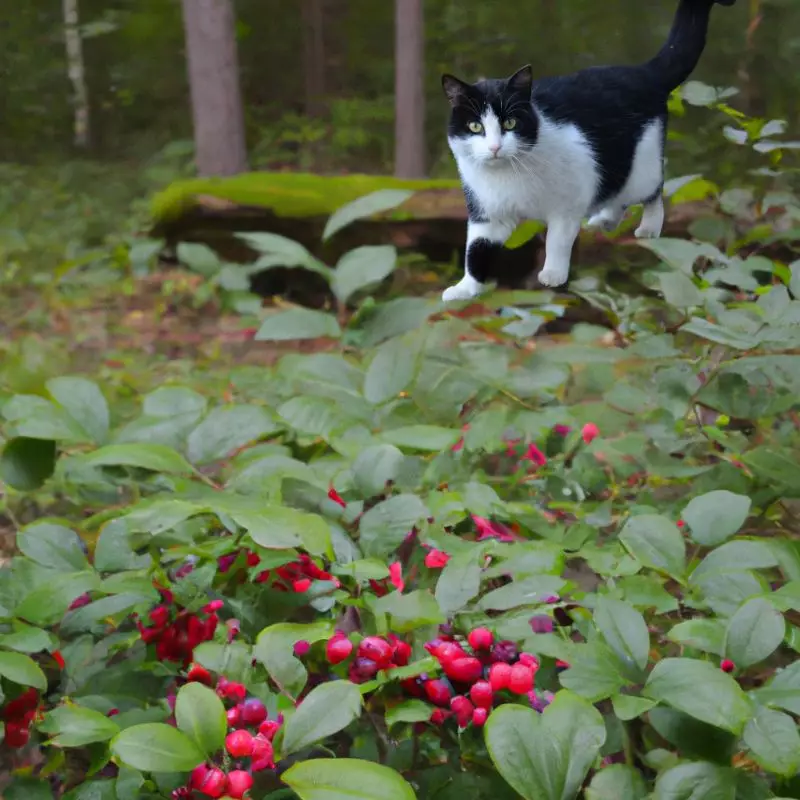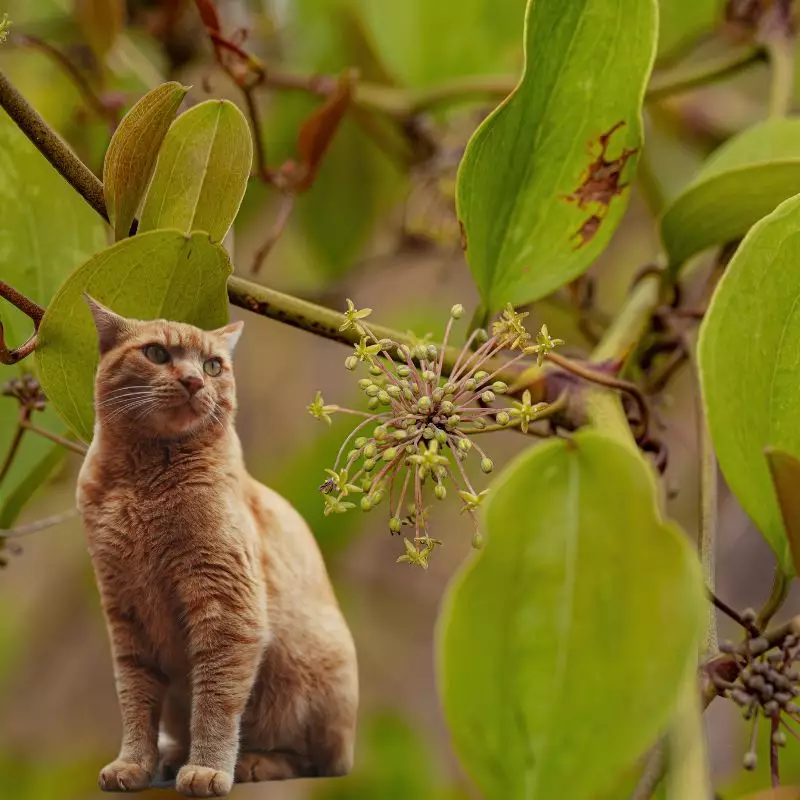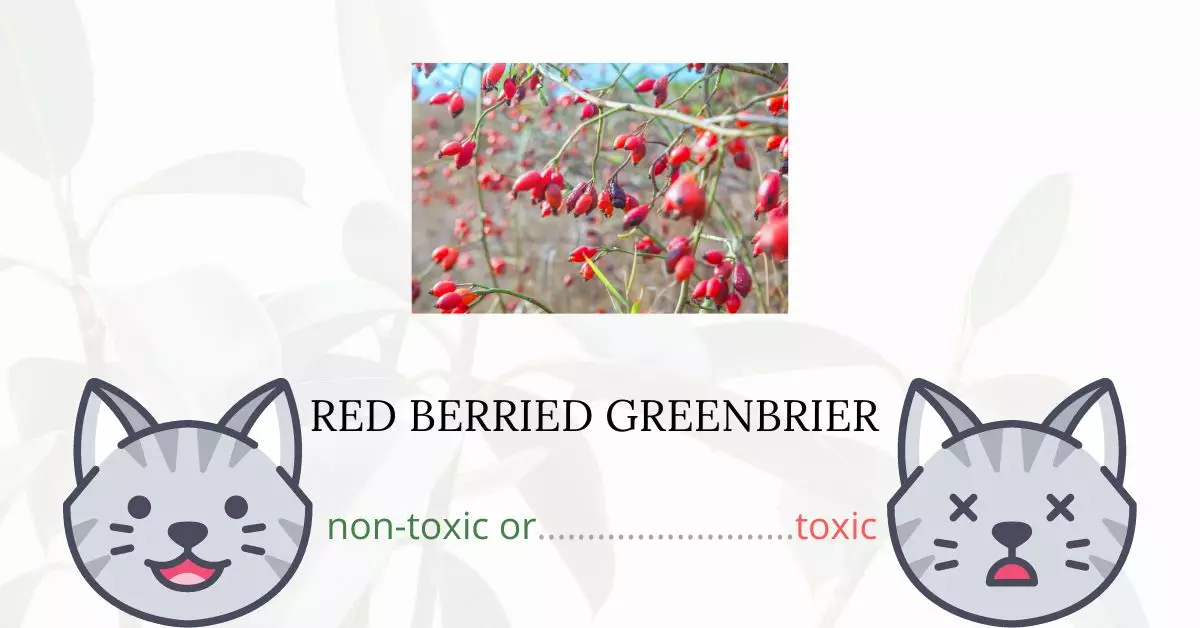The Red-Berried Greenbrier, commonly known as Coral Greenbrier, is non-toxic and safe for cats.
This verdict has been drawn after extensive collaboration with a team of experienced DVMs (doctors of veterinary medicine). Through their insights and expertise, we are able to offer accurate and up-to-date information on the potential risks that various plants pose to cats, with our current focus being on the Red-Berried Greenbrier. Our assertions are further supported by meticulous research from high-authority websites, including the American Society for the Prevention of Cruelty to Animals (ASPCA) and PetMD.
It’s crucial to note that while this particular plant is safe for feline friends, allowing cats to regularly consume plants may not be advisable, as it might foster problematic behaviors towards your other houseplants.
Can Cats Eat Red-Berried Greenbrier or Coral Greenbrier?

It is fine for cats to have a small bite of any part of red-berried greenbrier. They will not suffer from adverse effects after eating this plant. But, consuming too much of this plant can cause an upset stomach.
Since cats are generally carnivorous animals, their stomachs do not have the ability to digest plants. Because of this, they end up having indigestion if they overeat plants.
You should also note that using commercial fertilizers and pesticides on plants may cause poisoning in cats. Toxic chemical traces may remain on plants and it is highly likely that munching cats will ingest them.
What is Red-Berried Greenbrier or Coral Greenbrier?

The Red Berried Greenbrier is a native to the United States and usually grows on the coastal plain areas. It is also known for its other common names Coral Greenbrier, Red Bead Greenbrier, Red-berried Bamboo, GreenbrierRed-berried Swamp, and SmilaxWalter’s Greenbrier.
It is a woody deciduous vine in the greenbrier family that spreads rapidly from an extended rhizome via tendrils. It can be found along pond margins, stream banks, and other submerged areas for at least part of the year. It can be found in swamp forests and bogs where it is submerged for at least part of the year. This heat-tolerant plant produces red berries that last all winter.
Keeping Cats Away From Red-Berried Greenbrier or Coral Greenbrier

Freshly turned soil is very appealing to cats as a litter box. Cats can be discouraged from digging by laying down a chicken wire, plastic fencing, or even bird netting on top of the soil. It also prevents them from walking on it. This is easier to do before planting and simply clip the wire to create bigger holes for the plants. It can be made more appealing by covering it with mulch.
Making the plants taste unpleasant to your cat’s taste buds is another efficient strategy. Because cats despise the taste and smell of citrus, spritz your plants with water mixed with lemon, lime, or orange juice. The citrus scent is often enough to keep your cat away.
Plants to Avoid For Your Cats
If you are a cat owner and unsure if the plants growing in your yard are harmful to your cats, check out this list of toxic plants for cats. You can also check our list of non-toxic plants for cats.





